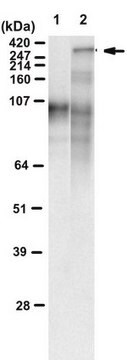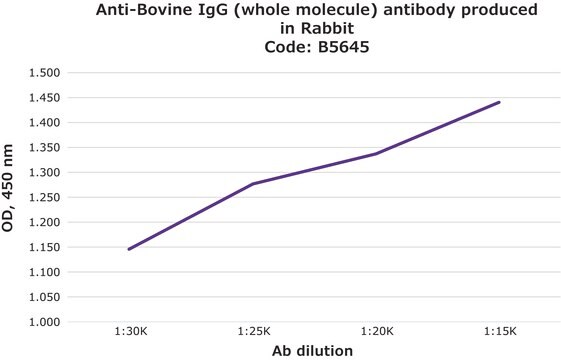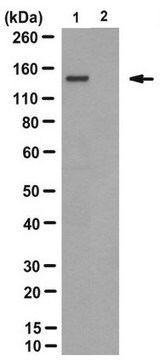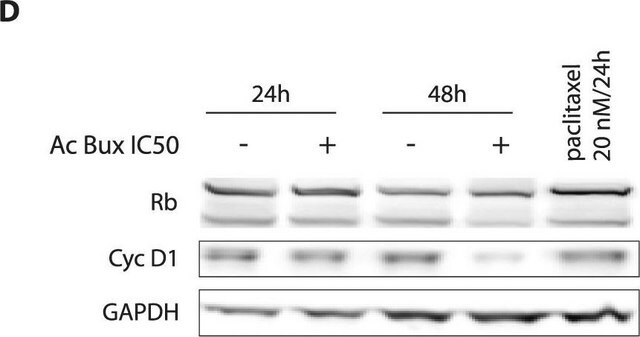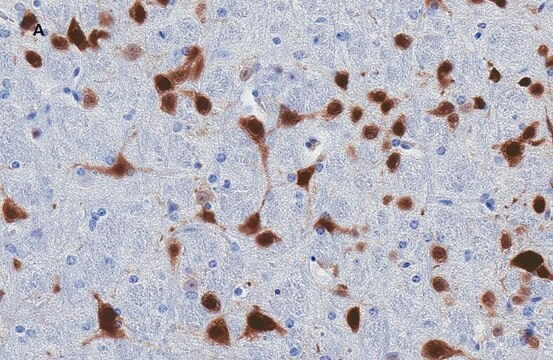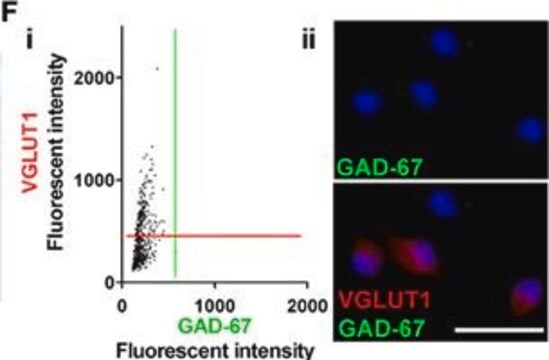MAB5374
Anti-Huntingtin Disease (HD/HTT) Antibody
CHEMICON®, mouse monoclonal, mEM48
Sinônimo(s):
Huntingtin
About This Item
Produtos recomendados
Nome do produto
Anti-Huntingtin Protein Antibody, clone mEM48, culture supernatant, clone mEM48, Chemicon®
fonte biológica
mouse
Nível de qualidade
forma do anticorpo
culture supernatant
tipo de produto de anticorpo
primary antibodies
clone
mEM48, monoclonal
reatividade de espécies
human
reatividade da espécie (prevista por homologia)
mouse, rat
fabricante/nome comercial
Chemicon®
técnica(s)
immunocytochemistry: suitable
immunohistochemistry: suitable
western blot: suitable
Isotipo
IgG
nº de adesão NCBI
nº de adesão UniProt
modificação pós-traducional do alvo
unmodified
Informações sobre genes
human ... HTT(3064) , SLC6A4(6532)
Descrição geral
Especificidade
Imunogênio
Aplicação
1:50-1:100 of a previous lot using ABC on 4% paraformaldehyde fixed tissue. Suggested dilution buffer is PBS containing 3% BSA. The antibody works on paraffin embedded tissue sections.
Suggested dilution buffer is PBS containing 3% BSA. The antibody works on paraffin embedded tissue sections. Yu, Z et al (2002) Hum. Mole. Genetics 11(8):905-914. (http://hmg.oxfordjournals.org/cgi/content/full/11/8/905) for good IHC methods and photos of mEM48 on rodent tissues with human transgenic material.
Immunocytochemistry:
light 4% PFA fixation followed by 0.1% triton X-100 incubation prior to blocking is suggested.
A previous lot of this antibody was used in IC.
Western blot:
1:50-1:500 using ECL depending on the level of mutant protein. Suggested dilution buffer is PBS containing 3% BSA or PBS containing 5% non-fat milk.
Nuclear fraction preparations enhance signals; monomeric protein ~80kDa; aggregates are common which can be >200kDa in size.
Optimal working dilutions must be determined by the end user.
Neuroscience
Neurodegenerative Diseases
Qualidade
Western Blot Analysis:
1:1000 dilution of this lot detected Huntingtin Protein on 10 μg of HEK293 lysates.
Descrição-alvo
forma física
Armazenamento e estabilidade
Handling Recommendations: Upon receipt, and prior to removing the cap, centrifuge the vial and gently mix the solution. Aliquot into microcentrifuge tubes and store at -20°C. Avoid repeated freeze/thaw cycles, which may damage IgG and affect product performance.
Nota de análise
Normal human cerebral cortex lysate, mouse brain cortex samples from HD or wild type mice
HEK293 lysates.
Outras notas
Informações legais
Exoneração de responsabilidade
Não está encontrando o produto certo?
Experimente o nosso Ferramenta de seleção de produtos.
recomendado
Código de classe de armazenamento
12 - Non Combustible Liquids
Classe de risco de água (WGK)
WGK 2
Ponto de fulgor (°F)
Not applicable
Ponto de fulgor (°C)
Not applicable
Certificados de análise (COA)
Busque Certificados de análise (COA) digitando o Número do Lote do produto. Os números de lote e remessa podem ser encontrados no rótulo de um produto após a palavra “Lot” ou “Batch”.
Já possui este produto?
Encontre a documentação dos produtos que você adquiriu recentemente na biblioteca de documentos.
Nossa equipe de cientistas tem experiência em todas as áreas de pesquisa, incluindo Life Sciences, ciência de materiais, síntese química, cromatografia, química analítica e muitas outras.
Entre em contato com a assistência técnica